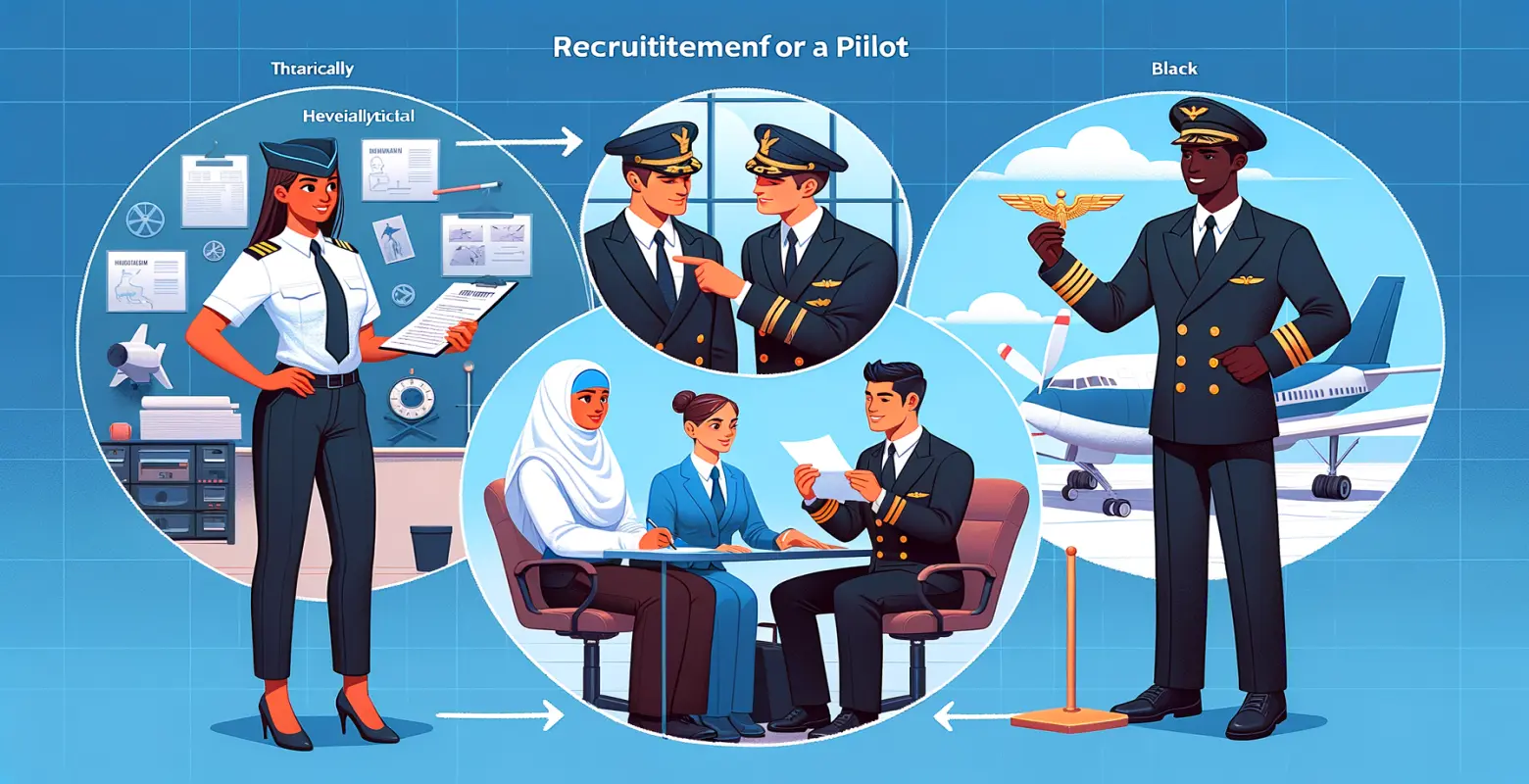What does the pilot recruitment process look like?
Introduction
The modern world of aviation fascinates many of us. For some, the dream of becoming a pilot is a reality that can be achieved through proper preparation and determination. The pilot recruitment process is complex and requires passing through many stages. In this article, we will take a closer look at this process, the requirements placed on candidates, and the benefits and challenges that future pilots face. In the era of dynamic development of the aviation industry, understanding this process is crucial for those considering a career in this exciting field.
Basic requirements and qualifications
Before a candidate begins the pilot recruitment process, certain basic requirements must be met. Firstly, it is necessary to be at least 18 years old and have completed secondary education. Many airlines prefer candidates with higher education, especially in fields related to exact sciences or engineering, although this is not always necessary.
The second key requirement is having the appropriate language skills. Since English is the international language of aviation, proficiency in this language at a communicative level is essential. This not only means the ability to hold conversations but also the ability to read and understand technical documentation and aviation procedures.
Licenses and certificates
The pilot recruitment process requires obtaining several key licenses and certificates. The first step is to obtain a Private Pilot License (PPL), which allows flying private aircraft for recreational purposes. The next stage is obtaining a Commercial Pilot License (CPL), which enables working as a pilot in airlines.
To obtain a CPL, it is necessary to have at least 200 flight hours, including a specified number of navigational and night flight hours. Additionally, candidates must undergo theoretical and practical training, including principles of aircraft operation and avionics, emergency procedures, and meteorology.
Tests and exams
Pilot candidates must pass a series of tests and exams that assess their theoretical and practical abilities. The theoretical exams cover areas such as meteorology, navigation, aviation regulations, and flight principles. After passing the theoretical exams, future pilots must pass a practical exam that evaluates their skills in real flight conditions.
In addition, candidates undergo various psychological and medical tests to ensure they are capable of working in a demanding and stressful environment. These tests often include assessments of cognitive abilities, problem-solving skills, and teamwork capabilities.
Recruitment process in airlines
After obtaining the necessary licenses and certificates, candidates can start the recruitment process in airlines. Each airline has its specific requirements and recruitment processes, but most of them involve similar stages.
The first step usually involves submitting an online application, which includes sending a resume, a cover letter, and documents confirming qualifications. Selected candidates are then invited to qualifying interviews, which may include both traditional questions about work experience and situational tests assessing interpersonal skills and decision-making.
Simulators and practical training
An important part of the recruitment process is training on flight simulators. These simulators are used to assess a pilot's skills in conditions close to reality, allowing for practicing various emergency scenarios and standard operational procedures.
After successfully completing training on simulators, candidates often undergo further practical training on real aircraft, under the supervision of experienced captains and instructors. The path to becoming a first officer requires intensive training, which can last from several months to even several years, depending on the airline and type of aircraft.
Challenges and the future of the pilot profession
Being a pilot is not just about fulfilling the dream of flying, but also facing many challenges. Working in aviation requires great time flexibility, readiness to work irregular hours, and the ability to cope with stress. However, for many pilots, the benefits of this career, including the opportunity to travel, attractive earnings, and the prestige of the profession, are worth taking on these challenges.
The future of the pilot profession seems promising, especially in the context of the growing demand for air transport. Technological advancements, including automation and the use of new materials, create new opportunities and challenges for the industry. With technological progress, the role of pilots may undergo changes, but their presence on board remains essential for ensuring flight safety and efficiency.
Summary
Recruitment as a pilot is a complex, demanding, and time-consuming process, but at the same time, it offers a rewarding career for those who are ready to take on the challenge. From meeting basic requirements, obtaining licenses, to going through the recruitment process in airlines - each stage is significant and requires commitment and determination.
Being a pilot is not only about fulfilling the passion for flying but also about responsibility for the safety of many people. For those who dream of conquering the skies, understanding the recruitment process and preparing for it is a crucial step towards achieving the goal.






Number of comments: 0